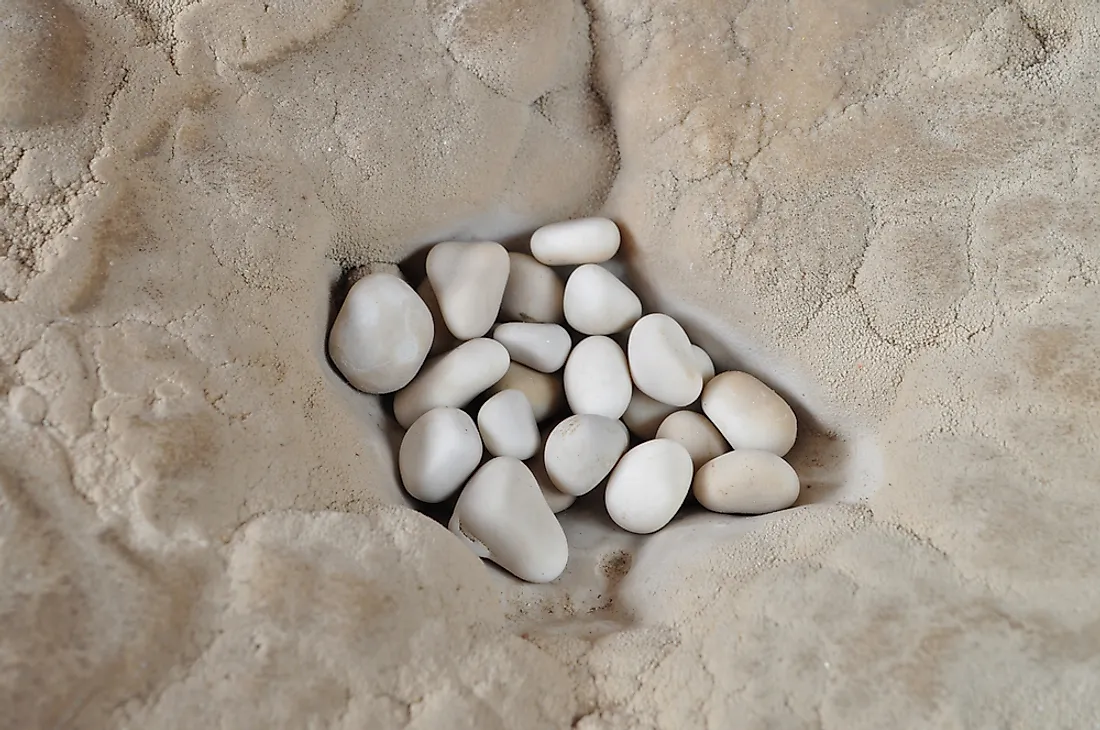What Is Cave Pearl?

The term cave pearl is used to describe the small sphere-shaped formations that can be found along the walls and ceilings of limestone caves. Like pearls from the ocean, this speleothem occurs as circular layers that develop around a central formation. This article takes a closer look at how cave pearls are formed, what they are made of, and where they can be found.
Cave Pearl Formation
Cave pearls are formed as a result of dripping water within limestone caves. This water loses carbon dioxide and leaves behind calcite, a carbonate mineral. The calcite collects around some piece of solid matter within the cave, which acts as a nucleus. The flow of the water causes this mineral to collect in a spherical shape and over time, additional layers of calcite are added. The formation continues to grow until it resembles a pearl. Interestingly, the nucleus matter around which the pearl forms does not need to be perfectly round. The vast majority of cave pearls develop into a round shape because of consistent and uniform growth. Other cave pearl shapes include elliptical, hexagonal, cylindrical, and cubical.
Moving water passes over cave pearls and works to polish their surface, leaving them shiny and almost reflective in appearance. Additionally, cave pearls may be carried along with the water, sometimes falling to the bottom of a pool, where it will collect or stick to other cave pearls.
The process of cave pearl formation is similar to that of a stalagmite. The difference between the two, and the reason a stalagmite cannot form is that the water moves too quickly in cave pearl formation.
What Are Cave Pearls Made Of?
As previously mentioned, cave pearls are primarily composed of calcite and although similar in appearance, are not usually considered to be an oolite. Other minerals found in the composition of cave pearls include magnesium, apatite, quartz, iron, and aluminum. The nucleus, or center, of a cave pearl, generally consists of a grain of sand. Other possible nucleus materials include bone, wood, plastic, limestone, and calcified clay.
Where Can Cave Pearls Be Found?
Cave pearls are most common in limestone caves, although they do not typically occur in high quantities. Two caves, however, are known for having an abnormally large number of cave pearls: the Cave of Marbles (Gruta de las Canicas) in Tabasco, Mexico and the Carlsbad Caverns in New Mexico, US.
The Cave of Marbles is a large cave system that measures 1,735 feet in length and 55 feet in depth. It is estimated to have around 200 million cave pearls, the majority of which are located about 328 feet from the entrance of the cave. These pearls are so abundant that they cover the cave floor at a depth of approximately 3 feet and cover an area of 3,121 square feet.
The largest concentration of cave pearls in the Carlsbad Caverns can be found in a called called the Rookery. The Rookery is one of the largest open areas in the lower section of the caverns. This cavern system is located within a National Park and receives a significant number of visitors every year. The cave pearls here are so abundant and attractive to tourists that they were once handed out as souvenirs.











